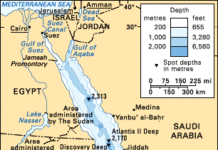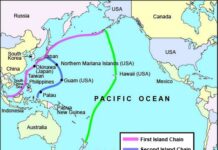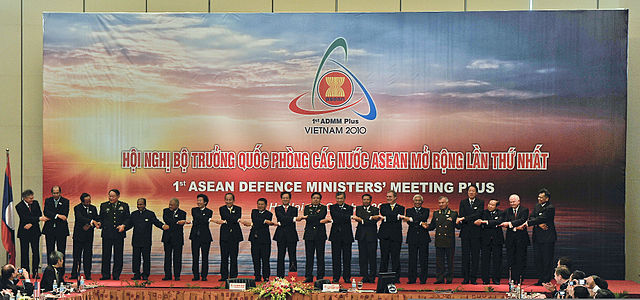
It is axiomatic in international relations that nation-states engage in the delicate art of balancing commercial, diplomatic and security relationships. Within the geopolitical conditions they find themselves in and to the extent that they do so, balance of power approaches may include, as “nested” sub-games within them, what are known as issue-linkage components of larger or lesser import. The extent to which issue-linkage influences the larger balance of power perspective helps differentiate between the foreign policy approaches of nation-states. In some instances strategic balancing is an end of itself, where foreign policy agencies autonomously pursue balance in their respective areas of responsibility. In others issue linkage is the dominant institutional theme, whereby the coupling of discrete foreign policy strands gives depth to the larger balancing project.
Issue linkage is a conceptual framework underlying a practical approach whereby decision-makers tie one foreign policy area to another. Although it can be used as an incentive or disincentive for cooperation or compulsion, it is more than a immediate or one time trade-off (say, by lifting an embargo on a targeted State in return for the dropping of a specific weapons program or military course of action). It is not a swap of favors, or episodic or selective in application. It is not a simple political or diplomatic connection. Instead, it is an ongoing strategic approach to policy formation and implementation that can be tightly or loosely applied. The most notable (if not entirely successful) instance of issue linkage was found in the Nixon/Kissinger policy of coupling political and military issues in its approach to Cold War adversaries (where carrot and stick tactics served to guide the progress of their relationship).
The core of the concept rests on consistently coupling two or more policy areas over time so that they combine to form a coherent strategic identity that conditions and therefore manages both internal and external expectations. The long term objective is to develop cross-national symmetries in approach to linked policy areas, something that promotes institutional isomorphism in the national agencies responsible for policy development and implementation in designated areas of responsibility. By respectively doing so, the organization and orientation of State bureaucracies in different countries begin to resemble each other, thereby facilitating greater understanding and coherence in their mutual interaction. For example, Ministries of Trade and Finance or Ministries of Defense in allied or partnered States are believed to exhibit broadly similar organizational characteristics in part due to the need to develop symmetries in approach to issues of common interest.
Strengthening of inter-State ties using issue linkage approaches helps create mutual dependencies amongst the parties. For larger actors this is a way of cementing alliance support structures, whereas for smaller actors it provides ongoing assurances against uncertainties in the linked policy areas.
During the Cold War issue-linkage was strongly applied, with security partners trading preferentially with each other. This occurred within both strategic blocs led by the US and USSR respectively. The idea was that the levels of trust developed between security partners facing common threats naturally eased the way for trading amongst them, with such linkages promoting the common good beyond what an isolated or uncoordinated approach to either policy area could achieve. The institutional edifice of Western trade during the Cold War was built on that conceptual platform, but it is not merely a Cold War phenomenon. Commonwealth trading relations before and after World War Two were explicitly grounded upon the security guarantees of the mother country to the former colonies. The relationship of NATO and the European Economic Community (EEC) was rooted in issue-linkage, and even today the European Union has at its core the ongoing security ties that bind the (now expanded) NATO Alliance together.
It must be noted again that issue-linkage can be part of a nested game embedded in a larger balancing approach to foreign policy. Here alliance linkages are tightened so as to give depth to the balance of power approach being pursued via a vis other States or international blocs.
After the Cold War issue-linkage became less compelling for most international actors and the specific linkage between security and trade consequently weakened. Lacking a compelling security imperative in a unipolar strategic environment characterized by rapid advances in global telecommunications, transport and exchange, policy-makers in a broad array of counties separated the concepts of trade and security into autonomous policy “baskets,” each with its own set of guiding criteria and rationales that were left largely uncoordinated within the larger strategic perspectives of the day. There was a common belief that the decline of Stalinism and triumph of capitalism in an era of globalization of production where commodity chains crossed over and transcended the ideological divides of the Cold War had made unnecessary the tight application of issue linkage to foreign affairs. In fact, for a decade or so, there was wide-spread belief that nations could trade for trade’s sake without much concern for security other than their mutual interest in protection against criminality and secure access to foreign suppliers and customers.
This period lasted from 1990 until the early 2000’s. After that, as new powers began to emerge in world affairs and new and old rivalries began to mark the inter-relationship between some of them, the notion of issue-linkage in foreign policy re-appeared as an analytic construct and conceptual tool. This was aided by the development of what came to be known as the “critical” or “human” security school of thought, in which non-military causes of inter-state conflict such as environmental degradation, refugee flows, climate change and other non-traditional areas of security concern were factored into the strategic equations that inform foreign policy making. The notion of “security community” now encompasses traditional and non-traditional security policy, thereby promoting a disposition towards linkage in foreign affairs.
Some countries, such as the US, have returned to the issue linkage foundation of tying security to trade. The former is a hard power projection and the latter is a soft power complement, the combination of which is applied as a “smart power” approach to international affairs. This approach is applied regionally, so as to bind geographically proximate states into a US-centric strategic orbit. As a close US ally, Australia also applies issue linkage between security and trade (evident in the 2004 Australia-US bilateral Free Trade agreement, which was a deliberate reward sought by the Howard government for its deployment of troops in Iraq and Afghanistan), although not as tightly as the US given its relative dependence on commercial intercourse with Asia. Similarly, Japan and South Korea have grounded their foreign policy in an issue-linkage approach towards their respective relationships with the US, something that only recently has been loosened as each country expands its trade ties with non security partners.
Other countries, such as New Zealand, do not adopt issue linkage perspectives on matters of foreign policy. Instead, New Zealand attempts to balance a security orientation towards the US and Australia with a trade orientation towards Asia and the Middle East. New Zealand sees no contradiction in the balancing approach in spite of the looming strategic competition between the PRC and the US in the Western Pacific. Instead, it sees itself as an interlocutor in the China-US relationship, valuable precisely because ti does not link its security to trade. Similarly but to a more subtle extent, Singapore primarily works according to principles of balance rather than linkage. These countries are not alone in attempting to diversify their foreign policy commitments in a balanced rather than issue-linked way. The reasons for adopting one or the other approach are a combination of Cold War and post Cold War legacies, current global position and assessments of the contemporary and future threat environments, macroeconomic conditions, institutional frameworks and perspectives in the foreign policy apparatus and a host of other geographic, sociological, diplomatic and demographic factors.
Larger powers exhibit a mixture of approaches. Russia pursues issue-linkage with several former Soviet Republics on the land borders of its near abroad, but prefers balancing strategies further afield (particularly with regard to Europe, China and Japan). China and India appear to prefer balancing strategies as an end in itself, and do not significantly couple their trade, military and diplomatic relations with any specific country (other than in China’s patron relationship with North Korea).
This is an example of a “pure” or autonomous balance of power approach, whereby distinct foreign policy areas are separated and compartmentalized rather than joined together so as to give flexibility to national decision-makers when engaging other States. Issue-linkage, on the other hand, binds decision-makers to broader strategic goals that impinge on institutional autonomy and freedom of action in specific policy areas. State agents need to be cognizant of the conceptual underpinning of the approaches adopted by their foreign interlocutors to relations in specific policy areas, to include matters of security and trade. Within the limits imposed by size and international position, that knowledge can mitigate against misunderstanding, minimize disadvantage and potentially assist in maximizing opportunities in any given foreign policy engagement.
Problems arise when countries that practice issue linkage engage those that do not. Be it in trade negotiations or security partnerships, the lack of symmetry in national approaches to areas of shared interest can lead to disappointments or failure in maintaining good relations and common projects. Reconciling autonomous balancing and issue linkage approaches to matters of security and trade is particularly vexsome because the former approach seeks to maintain distance between the two policy areas whereas the latter tries to bind them more closely together. States with such different strategic perspectives engage each other based upon different expectations of intent and outcome. That can limit the extent of their interaction and/or result in ex post differences of interpretation or mutual commitment.
Source: ASEAN Secretariat.
Regime type can influence the way in which States approach foreign affairs. Authoritarian approaches do not always mirror those of democratic States. Authoritarians tend to prefer centralized control over policy-making in order to ensure bureaucratic compliance, whereas democracies tend towards institutional autonomy and decentralized decison-making within established policy guidelines. Depending on their specific nature (e.g., personalist, one party dominant or military-bureacratic), authoritarians can display recognizably rational or distinctly insular traits in their policy orientation. For their part, democracies must pass policy-making through the filter of electoral scrutiny, thereby raising the possibility of reversal or inconsistency over time. In both cases the nature of the regime significantly determines which issues are linked, if at all, and how balancing is pursued in international affairs.
Within the foreign policy apparatus of all States, bureaucratic hierarchies and rivalries determine the specific tone and character of any given approach (for example, the US approach to trade relations is very much influenced by whether the Department of Commerce and Office of the Trade Envoy or State Department serve as the lead agency in that field. In New Zealand it is the dominance of trade-focused or more traditional diplomatic factions within the Ministry of Foreign Affairs and Trade that influences the overall tone of its foreign policy approach).
The practical implications of the adoption of an issue-linkage versus balancing approach to foreign policy is seen in the TPPA negotiations. The US perceives the TPPA as a soft power vehicle for containing Chinese influence in the Pacific Rim, something that works in concert with its repositioning of military assets in the Western Pacific. Countries like New Zealand see the TPPA as a stand-alone proposition, one that is to be taken on its merits and which at worst can be used as leverage when addressing other negotiations such as the RCEP (and vice versa).
The question is whether these differences in perspective can be reconciled so as to see the TPPA signed and ratified by both countries as well as the other parties to the agreement. Should that occur, then next question is whether that contrast in perspective can be maintained over the long term given the mutual ties that bind but the different expectations underpinning them. If not, then something will have to give on the part of one or all of the parties involved, which could undermine the future prospects of the agreement.
Links:
Symmetry and Asymmetry in Post Cold War Approaches to Trade and Security in the Pacific Rim.
http://www.econ.cam.ac.uk/dae/repec/cam/pdf/wp9913.pdf
http://qssi.psu.edu/files/poast.pdf
http://www.worldtradelaw.net/articles/perezwtorole.pdf














